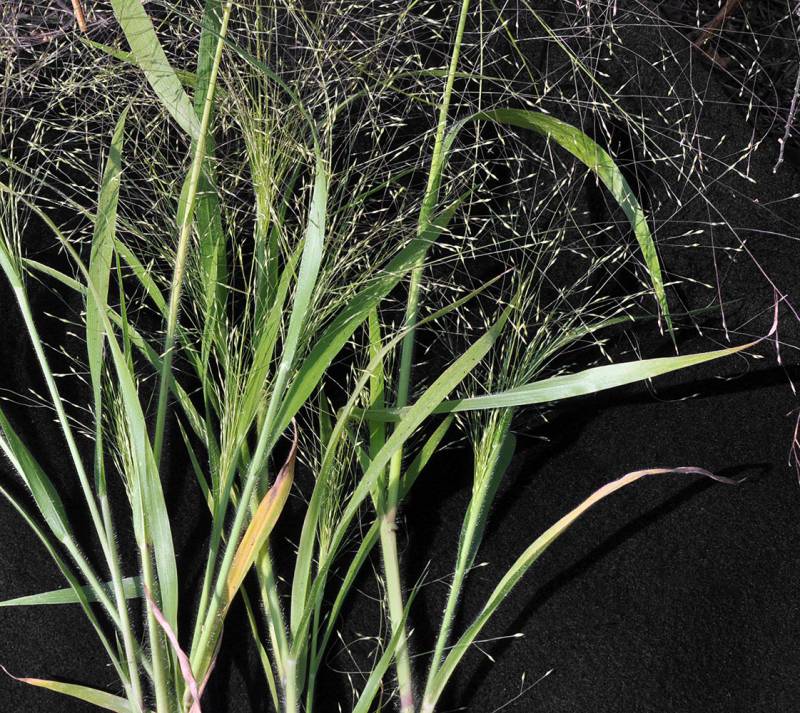Panicum capillare
Panicum miliaceum
witchgrass
millet
Sheaths open; articulation below the glumes;
ligules composed of straight hairs 1.5-2 mm. long;
blades 5-12 mm. broad.
Sheaths open; articulation below the glumes;
ligules composed of straight hairs about 2 mm. long;
blades 7-15 mm. broad.
Inflorescence a diffusely-branched panicle 1-3 dm. long. often partially included in the uppermost sheath;
spikelets 2-flowered, 2.5-3 mm. long; first glume 3-nerved, half as long and the spikelet; second glume 7-nerved, about as long as the lower lemma, which is sterile and 9-nerved, both well exceeding and enclosing the fertile lemma and palea.
Inflorescence a somewhat congested panicle 10-30 cm. long, the branches erect, scabrous;
spikelets 2-flowered, about 4.5 mm. long;
glumes strongly nerved, glabrous, acuminate, the first 2-3 mm. long, 7-nerved, the second 11-nerved, equal to the sterile first lemma, which is 9- to 11-nerved;
palea of sterile flower membranous, bi-lobed, 1.5 mm. long; hardened, fertile upper lemma and palea enclosed by the second glume and sterile lemma.
Panicum capillare
Panicum miliaceum
- Local floras:
BC,
CA,
OR,
WA
- Local Web sites:
CalFlora,
CalPhotos,
Flora NW,
PNW Herbaria
WildflowerSearch
iNaturalist (observations)
USDA Plants Database
- LBJ Wildflower Center
- SEINet
- Plants of the World Online
- Encyclopedia of Life
- Wikipedia
- Google Image Search
- Local floras:
BC,
OR,
WA
- Local Web sites:
Flora NW,
PNW Herbaria
WildflowerSearch
iNaturalist (observations)
USDA Plants Database
- LBJ Wildflower Center
- SEINet
- Plants of the World Online
- Encyclopedia of Life
- Wikipedia
- Google Image Search



